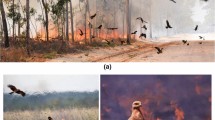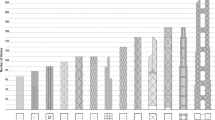Abstract
Landmark structures are commonly constructed as tall buildings with complex shapes, such as twisted, tilted, and tapered towers. Although the appearances of these buildings are attractive, their structural safety must be investigated more carefully in comparison with conventional high-rise buildings. Especially in the case of a tilted high-rise building, lateral displacement even occurs from its own weight. Therefore, seismic response reduction is a very important issue for a tilted-form tower to secure structural safety. In this study, a semi-active tuned mass damper (SATMD) was employed for a tilted high-rise building subjected to seismic excitations, and its dynamic-response reduction capacity was evaluated. Two 300-kN magnetorheological (MR) dampers were employed to make a SATMD, which was installed on the top of a 100-story tilted example building. A fuzzy inference system controller (FISC) was used to make appropriate command voltages to control the SATMD. The various design parameters of the FISC were optimized by an evolutionary multiobjective optimization technique. A conventional semi-active groundhook controller was also used for comparison. The control performance of the proposed SATMD was compared to that of a conventional optimal passive TMD. The numerical results show that the fuzzy-controlled SATMD provided the best control performance. The proposed SATMD provided similar control performance while using only less than 30% of the mass quantity compared to passive TMD.








Similar content being viewed by others
References
Bathaei, A., Zahrai, S. M., & Ramezani, M. (2018). Semi-active seismic control of an 11-DOF building model with TMD+MR damper using type-1 and -2 fuzzy algorithms. Journal of Vibration and Control, 24(13), 2938–2953.
Bońkowski, P. A., Zembaty, Z., & Minch, M. Y. (2019). Seismic effects on leaning slender structures and tall buildings. Engineering Structures, 198, 109518.
Coello, C. A. C., Brambila, S. G., Gamboa, J. F., Tapia, M. G. C., & Gómez, R. J. (2020). Evolutionary multiobjective optimization: Open research areas and some challenges lying ahead. Complex and Intelligent System, 6, 221–236.
Deb, K., Pratap, A., Agrawal, S., & Meyarivan, T. (2002). A fast elitist non-dominated sorting genetic algorithm for multi-objective optimization: NSGA-II. IEEE Transactions on Evolutionary Computation, 6(2), 182–197.
Dormand, J., & Prince, P. (1980). A family of embedded Runge-Kutta formulae. Journal of Computational and Applied Mathematics, 6(1), 19–26.
Elias, D., & Matsagar, V. (2017). Research developments in vibration control of structures using passive tuned mass dampers. Annual Reviews in Control, 44, 129–156.
Erakovic, N., Dawson, T., & Cossette, K. (2010). “The leaning towers of Vegas,” Structure, June, pp. 26–28.
Hrovat, D., Barak, P., & Rabins, M. (1983). Semi-active versus passive or active tuned mass damper for structural control. Journal of Engineering Mechanics, ASCE, 190(3), 691–705.
Kang, J. W., Kim, H. S., & Lee, D. G. (2011). Mitigation of wind response of a tall building using semi-active tuned mass dampers. The Structural Design of Tall and Special Buildings, 20, 552–565.
Kim, H. S., & Kang, J. W. (2012a). An efficient structural analysis of super tall mega frame buildings using a multi-level condensation method. Journal of Asian Architecture and Building Engineering, 11, 343–350.
Kim, H. S., & Kang, J. W. (2012b). Semi-active fuzzy control of a wind-excited tall building using multi-objective genetic algorithm. Engineering Structures, 41, 242–257.
Kim, H. S., & Kang, J. W. (2018). MOGA-based structural design method for Diagrid structural control system subjected to wind and earthquake loads. International Journal of Steel Structures, 18(5), 1598–1606.
Koo, J. H., Setareh, M., & Murray, T. M. (2004). In search of suitable control methods for semi-active tuned vibration absorbers. Journal of Vibration and Control, 10, 163–174.
Moon, K. S. (2014). Comparative evaluation of structural systems for tilted tall buildings. International Journal of High-Rise Buildings, 3(2), 89–98.
Murudi, M. M., & Mane, S. M. (2004). “Seismic effectiveness of tuned mass damper (TMD) for different ground motion parameters,” 13th World Conference on Earthquake Engineering, Vancouver, B.C., Canada.
Nagarajaiah, S., & Narasimhan, S. (2006). Smart base-isolated benchmark building. Part II: Phase I sample controllers for linear isolation systems. Journal of Structural Control and Health Monitoring, 12, 589–604.
Nakai, T., Kurino, H., Yaguchi, T., & Kano, N. (2019). Control effect of large tuned mass damper used for seismic retrofitting of existing high-rise building. Japan Architectural Review, 2(3), 269–286.
Scott, D., Farnsworth, D., Jackson, M., & Clark, M. (2007). The effects of complex geometry on tall towers. The Structural Design of Tall and Special Buildings, 16, 441–455.
Smith, R. J. (2011). “Deflection limits in tall buildings—are they useful?,” Proceedings of the 2011 Structures Congress, Las Vegas, Nevada.
Sues, R. H., Mau, S. T., & Wen, Y. K. (1988). System identification of degrading hysteretic restoring forces. Journal of Engineering Mechanics, ASCE, 114(5), 833–846.
Warburton, G. B. (1982). Optimum absorber parameters for various combinations of response and excitation parameters. Earthquake Engineering & Structural Dynamics, 10, 381–401.
Weaver, W. Jr., & Johnston, P. R. (1987). Structural dynamics by finite elements. Prentice-Hall, Inc.
Yi, F., Dyke, S. J., Caicedo, J. M., & Carlson, J. D. (2001). Experimental verification of multi-input seismic control strategies for smart dampers. Journal of Engineering Mechanics, ASCE, 127(11), 1152–1164.
Acknowledgements
This research was supported by the National Research Foundation of Korea (NRF) grant and funded by the Korean government (MEST) (grant number NRF-2020R1A2B5B01002117).
Author information
Authors and Affiliations
Corresponding author
Additional information
Publisher's Note
Springer Nature remains neutral with regard to jurisdictional claims in published maps and institutional affiliations.
Rights and permissions
About this article
Cite this article
Kim, HS., Kang, JW. Application of Semi-active TMD to Tilted High-Rise Building Structure Subjected to Seismic Loads. Int J Steel Struct 21, 1671–1679 (2021). https://doi.org/10.1007/s13296-021-00528-4
Received:
Accepted:
Published:
Issue Date:
DOI: https://doi.org/10.1007/s13296-021-00528-4




